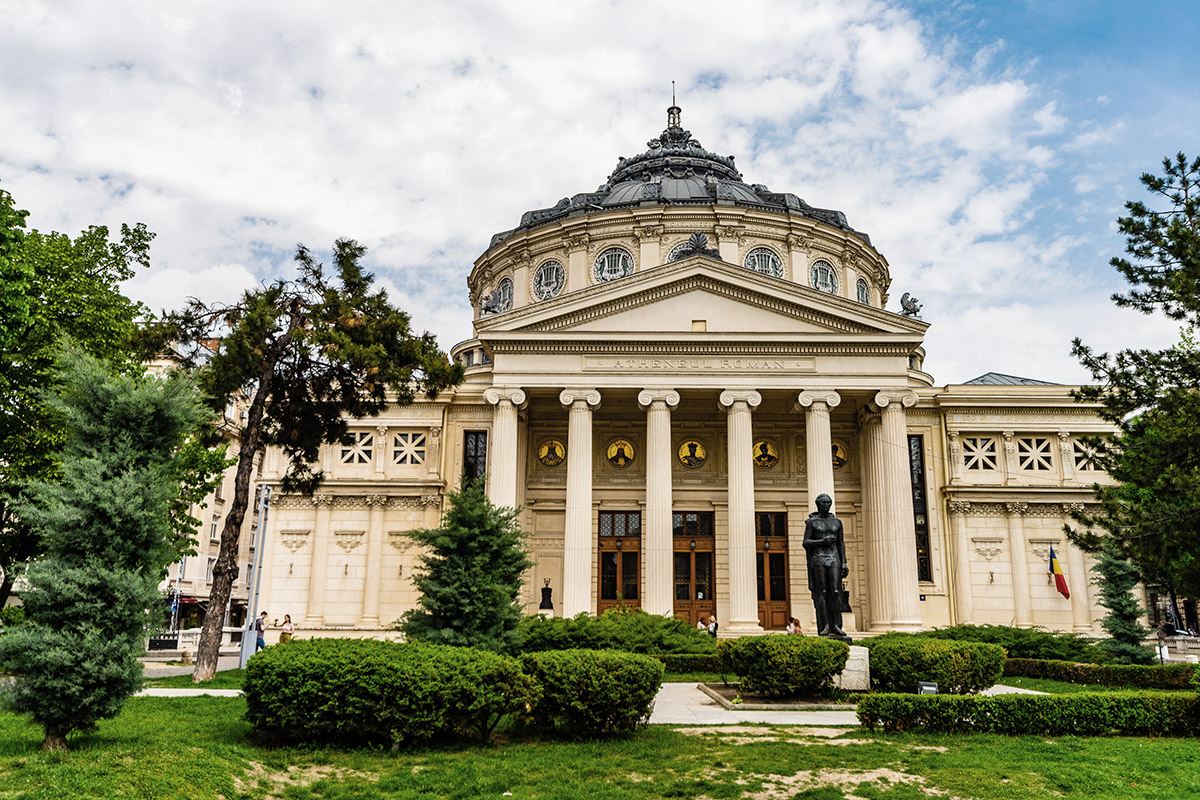Romanian Athenaeum
1-3 Benjamin Franklin Street, Bucharest

Considered one of the architectural jewels of Romania, the building of the Romanian Athenaeum in Bucharest is the product of the “Cultural Society of the Romanian Athenaeum”, founded in 1865 by an enthusiastic group consisting of Constantin Esarcu, V. A. Ureche, C. Rosetti, N. Krețulescu, Al. Odobescu and others. The place where the Romanian Athenaeum was built belonged to the Văcărești family. The plans, in a neoclassical style, were designed by the architect Albert Galleron, and in two years the building was almost ready, being inaugurated on February 14, 1888.
Seen from the outside, the building of the Romanian Athenaeum consists of a peristyle of six columns in the Ionic style, giving the impression of a Greek temple, under which are, in medallions, the faces of five rulers of Romania: Neagoe Basarab, Alexandru cel Bun, Vasile Lupu, Matei Basarab and King Carol I.
The interior is perhaps even more impressive than the exterior. In the entrance hall are four spiral staircases around Carrara marble columns and decorative carvings. The performance hall has excellent acoustics. What is particularly impressive is the 70-meter-long and 3-meter-high fresco that is made all around. The Athenaeum is a sanctuary of Romanian culture that has hosted outstanding concerts by some of the world's greatest conductors and soloists.